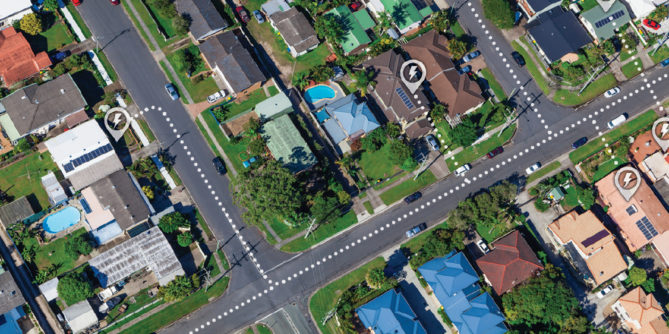Canadians love solar energy. According to the Renewable Energy Alliance of Ontario, some 80 percent of Ontarians said “yes” to surveys when asked if they’d like to see the province generate more solar power.[1]
But, not all of those survey respondents can participate in the solar marketplace. The U.S. Department of Energy’s National Renewable Energy Lab determined that only 22 percent to 27 percent of residential rooftop area in the US is suitable for an on-site photovoltaic (PV) system due to shading, structural strength and other factors. [2]
Renters, who make up about one third of the housing market in Canada (according to the last National Household Survey conducted by Statistics Canada),[3] can’t install solar without a landlord’s approval. Permission may be an issue for many condo owners too. Meanwhile, many single-family homeowners simply can’t afford the price of solar PV.
For local distribution companies (LDCs) that want to offer customers a way to participate in the green energy economy, community solar installations with virtual net metering are an affordable and scalable solution. Such programs can help consumers go green and cut energy costs while reducing customer defection for LDCs. That will help LDCs maintain revenue to support vital electric infrastructure as we transition toward our clean energy future.
Virtual Net Metering 101
Virtual net metering goes hand in hand with community solar energy, which is one way those who have financial or structural impediments to private PV systems can still get sun-based electricity. With community solar, customers join a community co-operative that builds a single solar facility to supply each member with a portion of his or her electrical needs. These customers “own” a few panels of the installation’s PV array or a percentage of the system’s generation.
Virtual net metering is a method of bill crediting for that shared solar energy. Through it, customers receive credit on their bills that reflect the energy the PV system generates and pushes back onto the grid. For billing purposes, it’s as though the customer’s electricity meter is running backwards.
Customers don’t necessarily use the energy produced by a shared solar array. They may simply be helping to support green energy overall because they allow more solar to come onto the grid. In a way, such customers are using “virtual” solar and getting economic benefit from it. Their gain comes in the form of discounted electricity bills, which have been reduced by the application of credits that reflect the production of the shared solar installation.
Benefits of Virtual Net Metering for Utilities
As noted earlier, community solar installations allow LDCs to give consumers something they want – green power – and keep those consumers as customers. Such installations incent customers to stay with their LDC because they create lower bills without the expense of private rooftop solar systems. Because the community solar only serves a portion of the customer’s load, it continues to leverage the LDC’s distribution system and avoid stranded assets. The program enables new business models for LDCs, which helps increase competitiveness. Other benefits include:
- Cost-effectiveness
- Cleaner clean energy
- Optimal siting opportunities
- Opportunities for greater grid coordination
Benefits of Virtual Net Metering to Consumers
Inclusion is the name of the game with community solar and virtual net metering. These solutions offer an opportunity for people who otherwise wouldn’t be able to choose solar energy, a chance to go green. These includes renters who can’t install solar, those who can’t afford the investment and people with rooftops that do not support such technology. Along with opening up solar opportunities, virtual net metering delivers:
- Cost savings and price protection
- More affordable solar energy
Benefits to the Province
According to Canada’s National Energy Board, solar power is still a small portion of the country’s electricity supply. In 2016, Canada’s 2100 MW of installed capacity generated 3 TWh, and that represented only 0.5 percent of the country’s generation. More than 98 percent of Canada’s solar power is located in Ontario, largely because the provincial feed-in tariff incented its development. [4]
However, that tariff has become less over time, and new approaches can re-invigorate the solar industry. Community solar with virtual net metering is one such approach.
Smart deployment starts with a pilot
Pilots are an essential learning tool for the Ministry of Energy. They allow for a limited and controlled implementation that identifies issues and presents a way to test solutions before trying to deploy a program at scale. Among the things Ontario can learn with a pilot are:
- Clarification of regulatory requirements
- Opportunities to test market models
- Identification of billing and settlement issues
- Effective education
For further information on the topic of Virtual Net Metering, click here. The complete brief can be downloaded here: Virtual Net Metering: Clean Power for All People
—
References
[1] http://www.cansia.ca/news/its-time-to-get-the-facts-on-renewable-energy-in-ontario
[2] http://www.nrel.gov/docs/fy12osti/54570.pdf
[3] http://www.fin.gov.on.ca/en/economy/demographics/census/nhshi11-7.html
[4] https://www.neb-one.gc.ca/nrg/sttstc/lctrct/rprt/2017cnddptnrnwblpwr/slr-eng.html?=undefined&wbdisable=true
